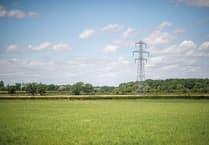A project which aims to track scores of salmon smolt as they migrate along the River Usk has entered into its second year as Natural Resources Wales’ (NRW) continues its efforts to halt the decline of the species by pinpointing the challenges they face on their journey to the sea.
The project, supported by The Wye and Usk Foundation, involves catching up to 100 salmon smolts a year and tagging them with acoustic transmitters, which emit regular high frequency pings.
A smolt is a stage of the salmon life cycle when the fish is preparing for migration to sea. The transmitters provide an insight to their movements, as well as providing data related to survival rates and migration behaviour, helping to inform future salmon management and conservation work.
An unseasonably wet May led to a probable good year for migration success during the project’s first year (2021A minimum of 67% of the tagged smolts successfully made the 100+km journey from the tagging site on the upper river to the Severn Estuary. Fastest individual fish passage time from a monitoring point upstream of Brecon to the final receiver array in the estuary at Newport (95.6km) was 36.22 hrs.
The project is part of NRWs Salmon and Sea Trout Plan of action, which aims to understand and address the many factors contributing to the decline in these fisheries.
Oliver Brown, Aquaculture Officer, leading the project for NRW said: “Salmon numbers, both adult and juvenile are at a record low in Welsh rivers, as well as other parts of the world, and we all have to do what we can to preserve them and safeguard this iconic species’ survival.
“The project will give us a good indication of what’s happening to these fish at a critical point in their life cycle. Previously we didn’t know how many smolts were getting to sea, so this project gives us a good indication of survival rates, as well as helping us understand how perceived barriers may be effecting migration, for example, bridge footings or weirs.
“Learning from the results in year one, we’ve deployed an additional 15 receivers along the River Usk this year, bringing the total to 46, to help increase the accuracy of detection data. We’ve also made modifications to our trapping methodology to increase efficiency.
“We’re grateful for the ongoing support of the Wye and Usk Foundation on this project. Ultimately, the information and data we gather will inform our collaborative work in the area of salmon conservation, which will prove invaluable in our efforts to tackle the cause of the population declines in the long term.




